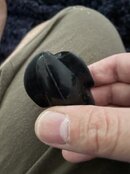"servicing" a reg usually means dismounting, cleaning, changing the seats of both 1st and 2nd stage and the dynamic O-rings. Often some mating surfaces need some finishing, particularly inside the first stage, where the piston head seals over the brass thanks to the large, thin dynamic O-ring.
Static O-rings should be inspected, cleaned, re-greased and reused, if in good conditions.
Finally, IP is measured and checked over time, after proper "burn in" of the seats, and the second stage is tuned to the wanted "cracking pressure".
The whole process usually takes almost one hour (to me, at least). Slightly more if it is sealed and silicon-packed.






